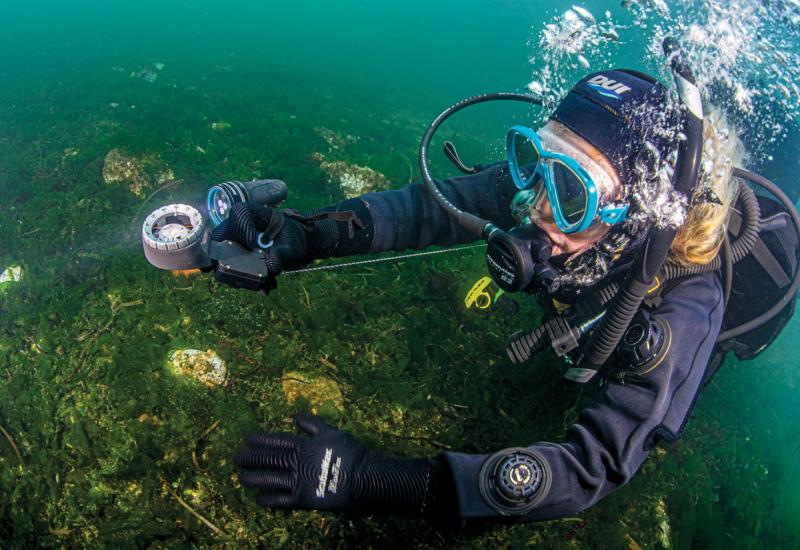Scuba Diving With Underwater Scooters and DPVs
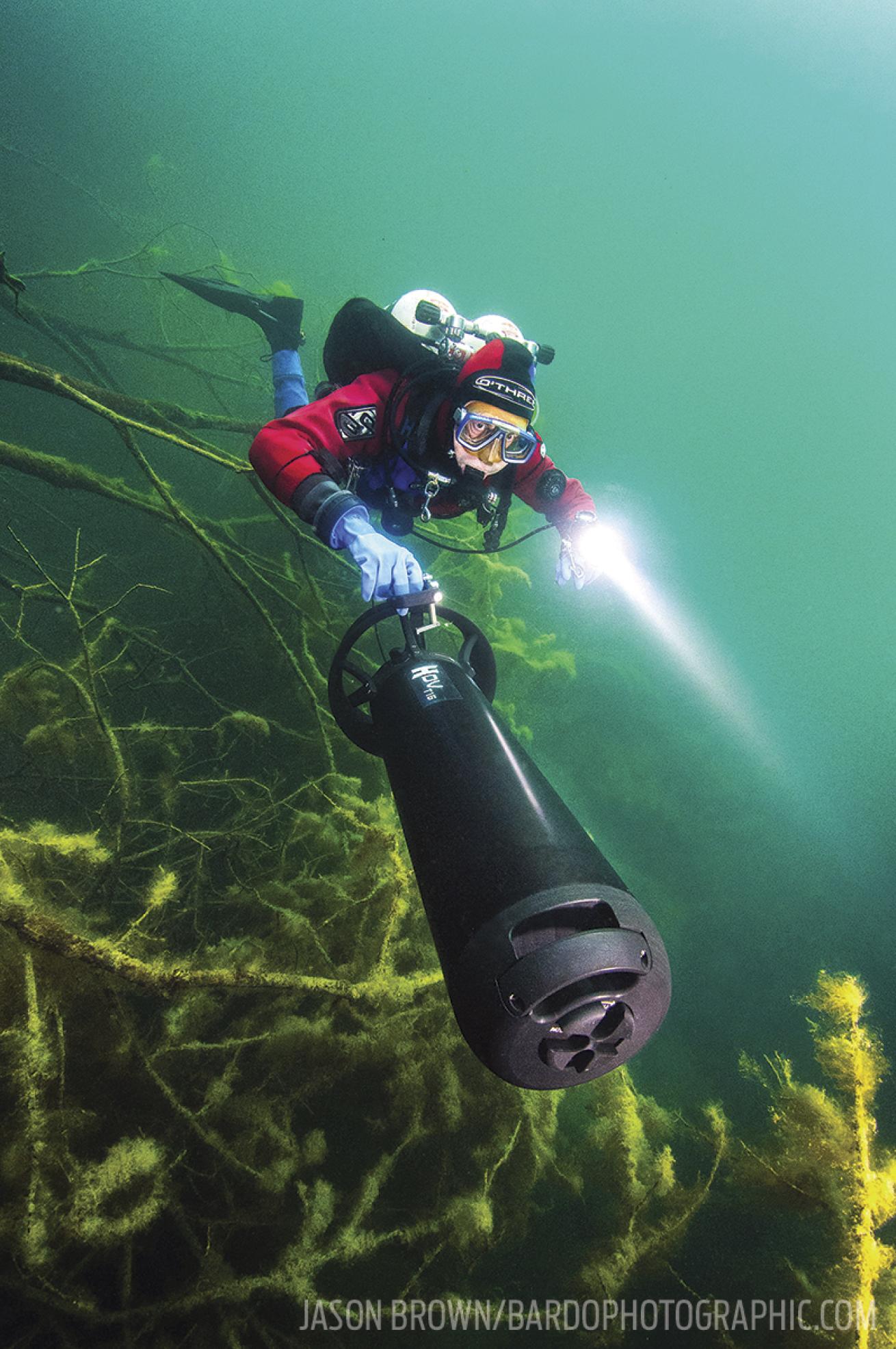
Jason Brown/BardophotographicSpeed Racer
Become a human torpedo with a DPV.
DPVs might be the most fun you can have underwater. Pulling the trigger on a self-propelled motorized scooter is the ticket to expanded range, extended bottom time and pure speed thrills. From entry-level recreational models that offer easy operation and long battery life to high-powered tec-ready rigs that can handle extreme depth and challenging conditions, to high-tech rockets that strap onto your cylinder for jetpack performance, there’s a DPV ride for every breed of scuba diver.
“DPV diving adds the adventure of speed and gives you the opportunity to explore to a greater extent,” says Liz Parkinson of Stuart Cove’s Dive Bahamas in Nassau. “As you fly over the reef or around a wreck, you also tend to see things from a different angle, which adds a new dimension.”
“Three of the biggest draws of DPV diving are the exhilaration, the utility and the ‘cool factor,’ ” says Ryan Mable of Ocean Enterprises in San Diego. “Speeding across sand flats or weaving through kelp with your buddy gives you the sensation of flying underwater, or maybe riding a motorcycle.”
“DPVs offer new skills to learn,” says Dave Ross of Tech Asia Divers Institute in Puerto Galera, Philippines, “new ways to approach your diving,” Here’s some advice from dive pros who teach others the way of the propeller.
GET THE RIGHT SKILLS
Before you grab hold and hammer the throttle, there’s a learning curve. Training to properly prepare and operate an underwater scooter is recommended by most experienced DPV pilots and instructors. Beyond simple mastery of driving skills, there are custom dive planning and buddy protocols to consider, not to mention navigation and troubleshooting.
“We recommend that you complete a DPV specialty course because it teaches you how to be safe underwater with a DPV, how to care for the machine, and how to get the best out of your experience,” says Parkinson. “ Working with a vehicle underwater that has the capability of taking a diver on a rapid descent or ascent comes with a certain level of responsibility. We want our guests to have fun, but first and foremost to be safe.”
“At a minimum, we require an orientation dive with an experienced DPV instructor who will supervise trainees in controlled conditions: flat bottom, good visibility, nothing crazy in terms of current,” says Ross. “If we are going to be heading out on more-advanced dives, such as a wall or places with deep water nearby or strong currents, we’ll ask people to go through a certification that teaches them most of the ‘what if’ worst-case scenarios, like a flooded scooter becoming very negative, what to do if the trigger throttle were to stick on, or how to avoid buddy separation.”
“Divers who want to use a DPV need to be strong in their buoyancy and trim,” says Alessandra Figari of Cave Training Mexico in Playa del Carmen. “Train in an open-water area and build your skills, because using a DPV requires being able to maneuver it without damaging the environment.”
OPEN NEW DOORS
DPVs can open the world of scuba to divers who might not otherwise be able to propel themselves. “We first started having DPVs in the shop because several of our staff are Handicapped Scuba Association instructors,” says Mable. “We are also very proud to run a scuba certification program exclusively for veterans, many of whom are navigating their post-service lives with serious disabilities. DPVs have helped our student divers get around underwater when the usual method of finning isn’t feasible — for example, a student with a leg amputation or someone paralyzed from the waist down. We now stock several DPVs in our rental room.”
EXPLORE FURTHER
In many dive destinations, a DPV allows divers to explore areas that wouldn’t be accessible under their own power.
“The ability to effortlessly and gracefully cover huge distances is a great attraction,” says Elena Ravani of Red Sea Diving College in Sharm El Sheikh, Egypt. “With a DPV, you’re out in front of the other divers, heading into current, opening up the possibility of seeing large pelagics that would otherwise be out in the blue, away from the normal dive routes.”
“The fun of a DPV for me is being able to reach a farther point in a cave that would be hard to reach by swimming, or to be able to dive a wreck in full in the ocean,” says Figari. “Riviera Maya has long cave systems, and some of them are wide enough to allow long penetrations where using a DPV is perfect, but considering the highly decorated fragile systems we have in this area, only very experienced and well-trained cave divers are suggested to use a DPV.”
“We’ve got outstanding diving in narrow, often high-flow channels where DPVs shine because they allow us to visit under almost any tidal conditions,” Ross says. “The current brings out all the big life but can mean a swimming diver can’t always get to it. Now we can go where we want to instead of where the water wants us to.
“The impact of DPVs on deeper dives is immense,” he adds. “Time is obviously limited at greater depths, and a swimming tec diver can hardly cover any ground — let alone the fact that hard work at depth is not very safe — so DPVs are a natural tool to incorporate as your diving grows.”
“Our divers love the DPVs,” Parkinson says. “It is always great to see the expression on divers’ faces when they get out of the water. Getting pulled along underwater at speed — who wouldn’t enjoy that?”
UNDERWATER SCOOTERS AND DPVS
There's a scooter for every depth; here are three current DPVs to consider.
TUSA SAV-7 EVO2
Price: $3,599 | Info: tusa.com
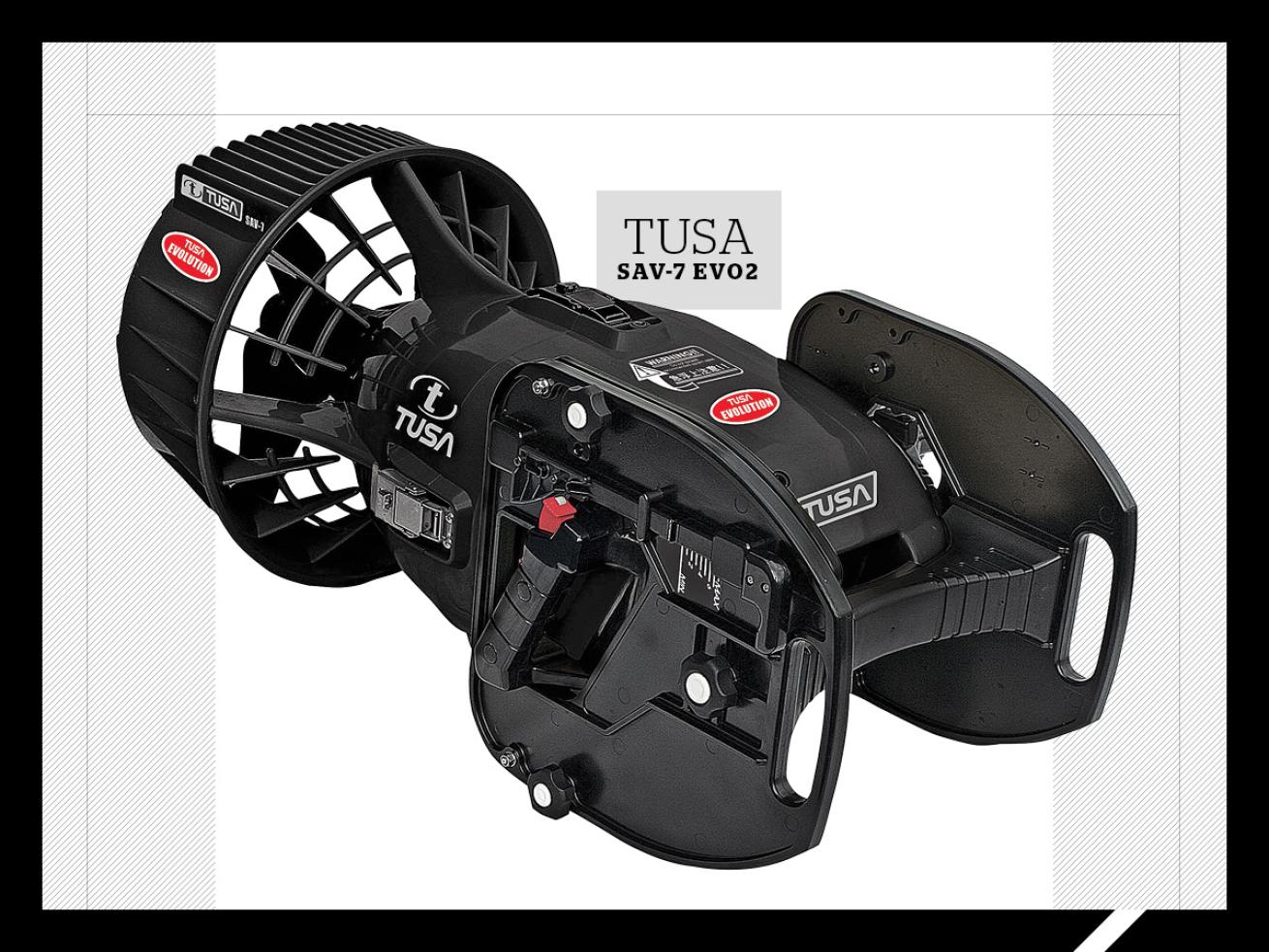
Courtesy TusaTusa SAV-7 EVO2
Quick, responsive speed control makes this tech-focused DPV stand out, and it’s built with a hands-free riding saddle. Battery life is 120 minutes, with a depth rating of 230 feet. Top speed is 2.8 mph for this 45-pound model.
INDIGO INDUSTRIES NAUTILUS GLH
Price: $2,100 | Info: indigo-industries.com
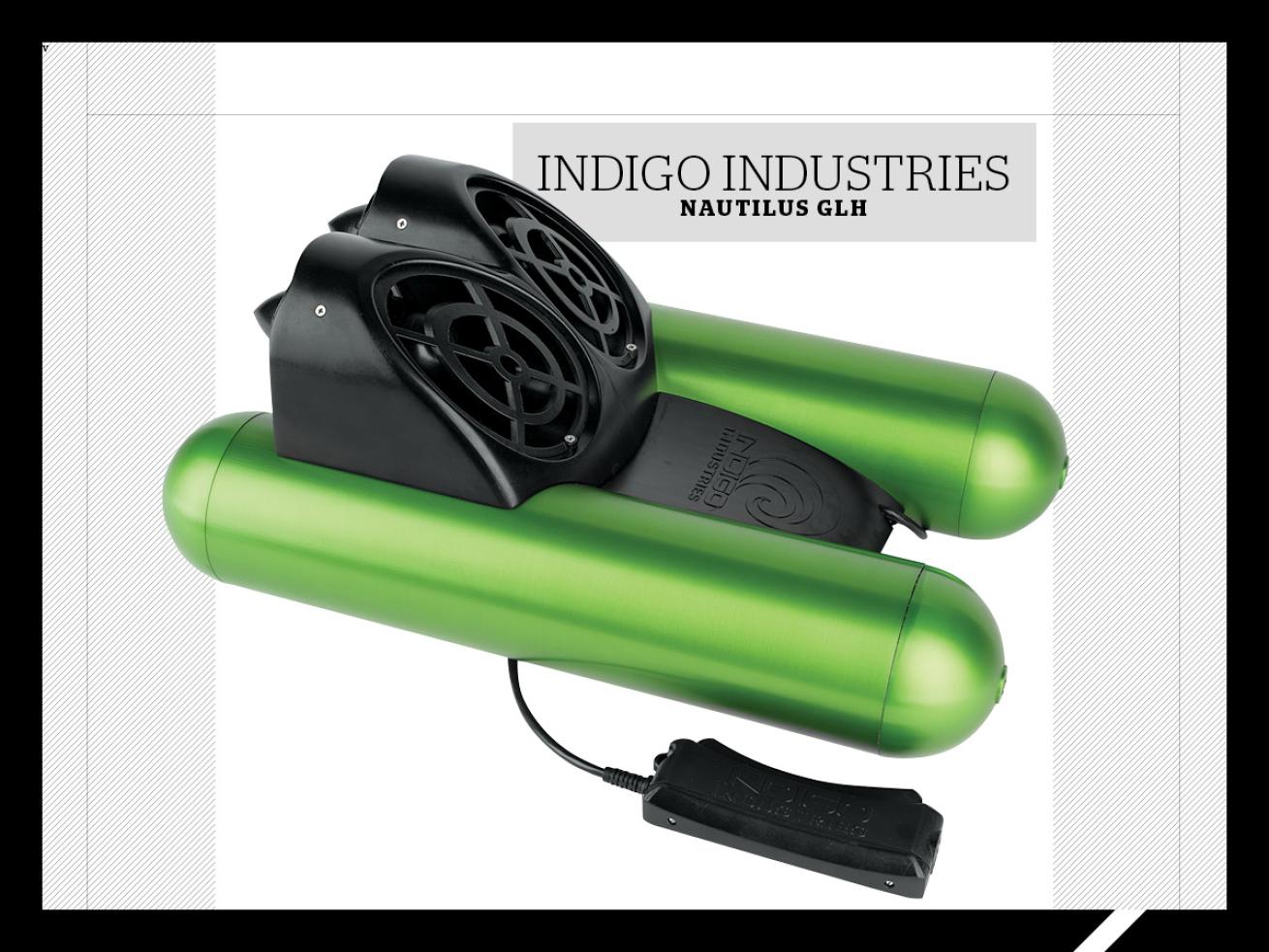
Jon WhittleIndigo Industries Nautilus GLH
The Nautilus GLH, with two 35-watt motors, attaches to your tank and directs the thrust behind you and out of your face. It has a battery life of 30 minutes, is depth-rated to 120 feet, goes at 4 mph and weighs 20 pounds.
SUBGRAVITY REFERENCE RS
Price $6,995 | Info: sub-gravity.com
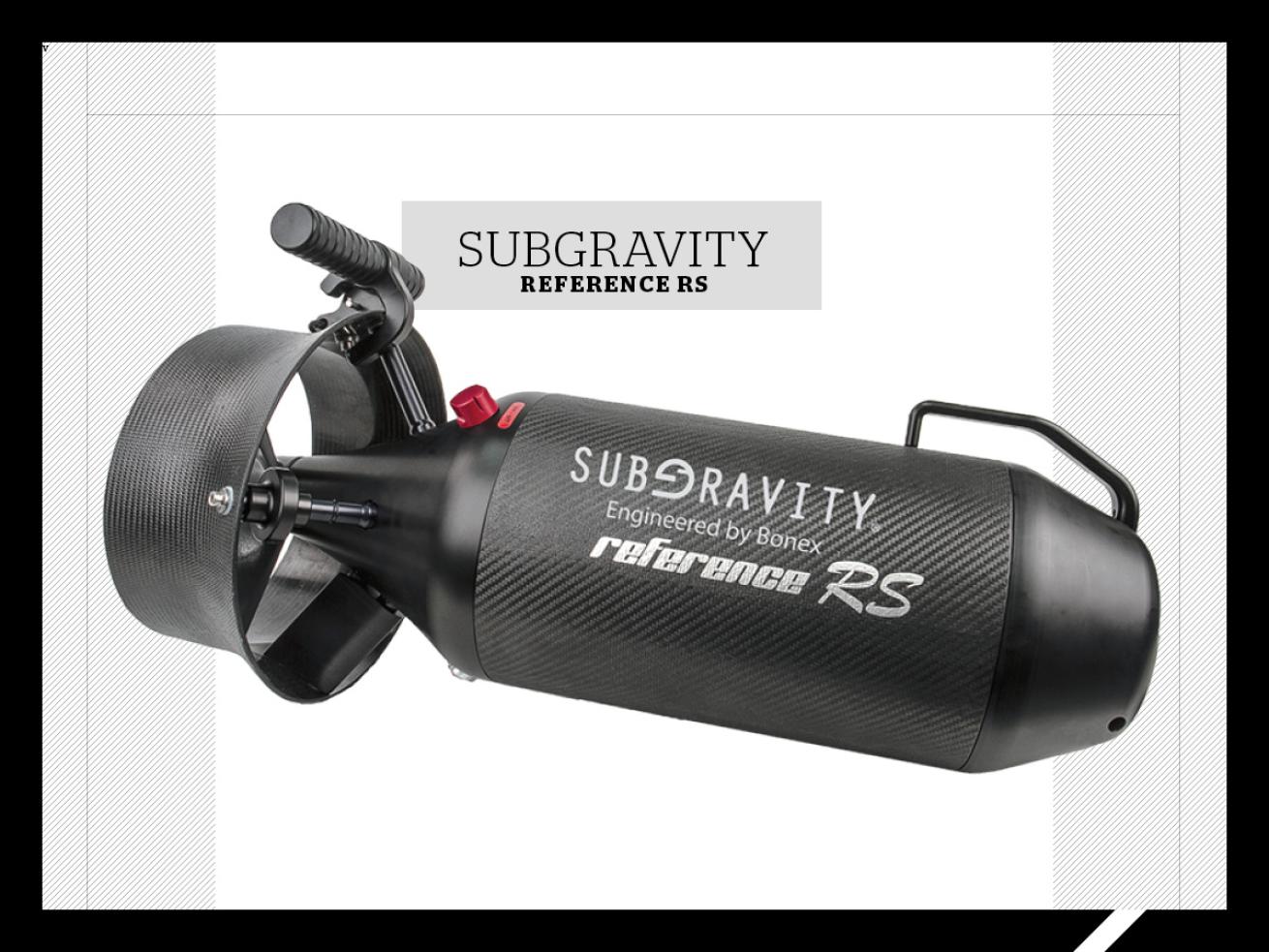
Courtesy SubGravitySubGravity Reference RS
Made for experienced DPV divers, the compact Reference RS is known for powerful thrust and long-lasting battery life — 4.33 hours. It’s rated to 656 feet, has a top speed of 3.18 mph and weighs 42 pounds.




